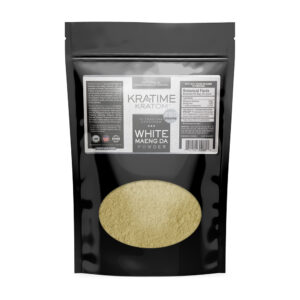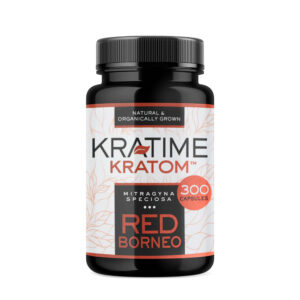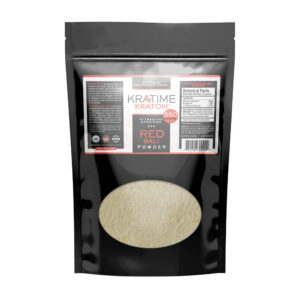How Kratom Can Help with Opioid Withdrawal
Are you or someone you know struggling with opioid withdrawal? The journey to recovery can be incredibly tough, but there’s a natural remedy that many are turning to for help: kratom. Let’s dive into how this powerful plant can be a game-changer in the fight against opioid addiction.
Understanding Opioid Withdrawal
Before we get into the details of how kratom can help, it’s essential to understand what opioid withdrawal is. When someone who has been using opioids regularly stops taking them, their body goes through a period of adjustment. This adjustment period is known as withdrawal, and it can be extremely uncomfortable.
Symptoms of Opioid Withdrawal
Opioid withdrawal symptoms can vary in intensity but often include:
- Anxiety
- Muscle aches
- Insomnia
- Sweating
- Nausea and vomiting
- Diarrhea
These symptoms can be so severe that many people find it challenging to quit opioids without some form of assistance.
What is Kratom?
Kratom, scientifically known as Mitragyna speciosa, is a tropical tree native to Southeast Asia. Its leaves have been used for centuries for their medicinal properties. Kratom contains compounds that interact with opioid receptors in the brain, making it an effective tool in managing pain and, interestingly, opioid withdrawal symptoms.
How Does Kratom Work?
Kratom’s active compounds, primarily mitragynine and 7-hydroxymitragynine, bind to the same receptors in the brain that opioids do. This interaction can help reduce the severity of withdrawal symptoms, making it easier for individuals to taper off opioids gradually.
Benefits of Using Kratom for Opioid Withdrawal
1. Eases Withdrawal Symptoms
One of the most significant benefits of using kratom for opioid withdrawal is its ability to ease symptoms. Many users report that kratom helps reduce anxiety, muscle aches, and insomnia, making the withdrawal process more manageable.
2. Natural Pain Relief
Kratom is known for its pain-relieving properties. For those experiencing the physical pain of withdrawal, kratom can offer a natural alternative to synthetic painkillers.
3. Boosts Mood
Withdrawal can often lead to feelings of depression and anxiety. Kratom has mood-enhancing properties that can help alleviate these feelings, providing emotional support during a challenging time.
4. Helps with Insomnia
Sleep disturbances are a common symptom of opioid withdrawal. Kratom can promote relaxation and improve sleep quality, helping individuals get the rest they need to heal.
How to Use Kratom for Opioid Withdrawal
Finding the Right Strain
Not all kratom strains are created equal. Some strains are better suited for managing withdrawal symptoms than others. Here are a few that are particularly effective:
- Red Vein Kratom: Known for its calming and pain-relieving properties, red vein kratom is often recommended for easing withdrawal symptoms.
- Green Vein Kratom: Offers a balance of pain relief and energy boost, making it suitable for daytime use.
- White Vein Kratom: Provides an energy boost and can help with motivation and mood, but may not be as effective for pain relief.
Dosage and Administration
Finding the right dosage is crucial for achieving the desired effects without unwanted side effects. It’s generally recommended to start with a low dose and gradually increase it until the desired relief is achieved. Here are some general guidelines:
- Low dose (1-2 grams): Provides mild stimulation and mood enhancement.
- Moderate dose (3-5 grams): Offers pain relief and can ease withdrawal symptoms.
- High dose (6-8 grams): Provides strong pain relief and sedation but may cause drowsiness.
Kratom Tea vs. Capsules
Kratom can be consumed in various forms, including as a tea or in capsule form. Kratom tea is made by brewing the leaves, which can provide a quicker onset of effects. Capsules are convenient and easy to dose, making them a popular choice for many users.
Potential Side Effects and Risks
While kratom can be incredibly beneficial, it’s essential to be aware of potential side effects and risks. Common side effects include:
- Nausea
- Dizziness
- Constipation
- Dry mouth
It’s also crucial to use kratom responsibly. Long-term use can lead to dependence, so it’s best used as a short-term aid in managing withdrawal symptoms.
Success Stories: Real People, Real Results
Hearing from others who have successfully used kratom to overcome opioid withdrawal can be incredibly inspiring. Many individuals have shared their stories of how kratom helped them reclaim their lives, providing hope and motivation for those currently struggling.
Combining Kratom with Other Treatments
Kratom can be an effective part of a broader treatment plan for opioid withdrawal. Combining it with other treatments, such as counseling and support groups, can enhance its effectiveness and provide comprehensive support.
Counseling and Therapy
Counseling can provide emotional support and help individuals address the underlying issues that led to opioid use. Therapy sessions can also teach coping strategies and provide a safe space to discuss challenges.
Support Groups
Joining a support group can connect individuals with others who are going through similar experiences. Sharing stories and advice can provide encouragement and reduce feelings of isolation.
Is Kratom Legal?
The legality of kratom varies by location. In some areas, it is fully legal, while in others, it is regulated or banned. It’s essential to research the legal status of kratom in your area before purchasing or using it.
Where to Buy Kratom
If you decide to use kratom to help with opioid withdrawal, it’s crucial to buy from a reputable source. Look for vendors who provide lab-tested products to ensure quality and purity. Online reviews and recommendations can also help you find a trustworthy supplier.
Conclusion
Kratom can be a valuable tool in managing opioid withdrawal symptoms, offering natural relief from pain, anxiety, and insomnia. While it’s not a cure-all, it can significantly ease the withdrawal process, making it easier to quit opioids and start the journey to recovery. As with any treatment, it’s essential to use kratom responsibly and in conjunction with other support systems.
FAQs
1. Is kratom addictive?
While kratom can be habit-forming if used in large amounts over an extended period, responsible use for short-term withdrawal management is less likely to lead to dependence.
2. How long does kratom take to work?
Kratom typically takes effect within 30 minutes to an hour after consumption, with the effects lasting several hours.
3. Can I use kratom while on other medications?
It’s crucial to consult with a healthcare professional before combining kratom with other medications, as it can interact with certain drugs.
4. How often should I take kratom for withdrawal symptoms?
It’s best to start with a low dose and take it as needed, rather than on a strict schedule. Listen to your body and adjust accordingly.
5. Are there any long-term risks of using kratom?
Long-term use of kratom can lead to dependence and other health issues. It’s recommended to use kratom as a short-term aid and seek other long-term treatment options.







